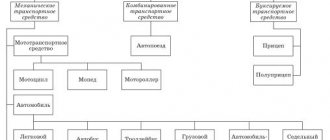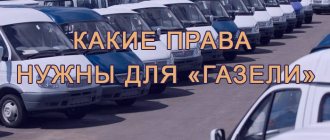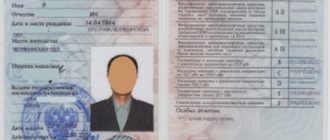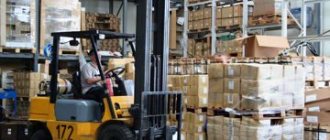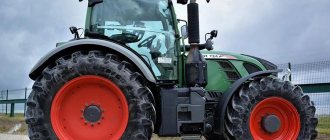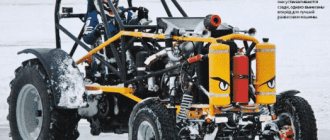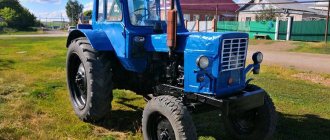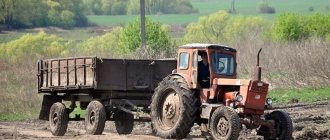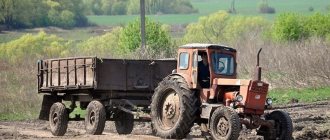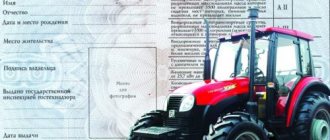Vehicle classification
Classification of vehicles is the distribution of various vehicles into groups, classes and categories. Depending on the type of design, parameters of the power unit, purpose or features that certain vehicles have, the classification provides for several such categories.
A vehicle (VV) is a technical device for transporting people and/or goods. Unlike lifting and handling devices, vehicles are usually used for transportation over relatively long distances.
According to the classifier of types of vehicles for international transport, a trailer is a vehicle without an engine, intended for the transport of passengers or goods, the vertical load of which is transmitted to the supporting surface through the wheels and which is adapted for towing by a car.
The rolling stock of road transport currently represents a wide range of vehicles, varying in technical characteristics and purpose. In order to streamline the classification of vehicles ⭐, a number of criteria have been adopted that serve as their characteristic features. Based on these features, vehicles are divided into groups that have common properties and characteristics.
In order to highlight the area of vehicles subject to this classification, the term “road transport” was defined, highlighting from the entire range of vehicles those that are operated primarily on public roads of all categories. This classification excludes other wheeled trackless vehicles, which due to their mass and size characteristics are not intended for driving on public roads. These are, for example, quarry vehicles, all-terrain vehicles, airfield and mine tractors, etc.
According to the current Traffic Rules, the following overall dimensions are currently accepted for road vehicles:
- in height - no more than 4 m from the road surface
- length - no more than 12 m for a truck, bus, trolleybus and trailer, no more than 15.18 m for an articulated bus or trolleybus
- in width - no more than 2.60 m for vehicles with an isothermal body, no more than 2.63 m for a KrAZ vehicle, MAZ-509A, MAZ-543 timber trucks, no more than 2.55 m for other vehicles
The total length of the road train should be no more than 20 m.
Currently, two types of classification are used - by type and by category of vehicles. Classification by type is the most common in our country, it was used for many years in the USSR, and continues to be used in many regulatory documents related to vehicles (state standards, traffic rules, etc.). In addition, this classification is applied when registering vehicles. The scheme for classifying vehicles by type is shown in the figure.
Rice. Scheme of classification of vehicles by type
The presence of an engine is used as a criterion for the most general division of vehicles. In this case, vehicles are divided into mechanical, equipped with an engine, and towed, not equipped with an engine.
A motor vehicle and one or more towed vehicles can form a combined vehicle, which is called a road train if it consists of a car and one or more trailers coupled to it by means of a coupling device.
Classification of motor vehicles
- for cars
- for motor vehicles
- for tractors
A car is a mechanical vehicle that is driven by an energy source, has at least four wheels located on at least two axles, is designed to move on trackless roads and is used for transporting people and (or) cargo, towing vehicles intended for transporting people and (or) goods, performing special work. This term also applies to vehicles whose engines are powered by direct electric current from an overhead contact network (trolleybuses), as well as to three-wheeled vehicles whose curb weight exceeds 400 kg.
Curb weight means the gross shipping weight of the vehicle plus the weight of coolant, lubricants, windshield washer fluid, fuel (tank filled to at least 90% of rated capacity), spare tires, fire extinguishers, standard spare parts, wheel chocks, standard set of tools.
A motor vehicle is a single-track, two-wheeled motor vehicle.
A tractor is a mechanical vehicle used to implement pressure or traction force through equipment mounted on it.
Classification of towed vehicles
A trailer is a vehicle without an engine, designed for the transport of passengers or goods, in which the entire vertical load is transmitted to the supporting surface through its wheels, and adapted to be towed by a car.
A semi-trailer is a trailer which, by its design, is intended for use with a tractor-trailer and part of the total weight of which is transferred to the tractor-trailer through the fifth-wheel coupling.
A characteristic feature of the automobile division is their main purpose. It can be used to transport passengers or transport goods (special equipment).
A passenger car is a vehicle that, by its design and equipment, is designed to transport passengers and luggage while providing the necessary comfort and safety. In this case, a passenger car with no more than nine seats, including the driver’s seat, is called a passenger car, and more than nine are called a bus.
A truck is used to transport goods. If the chassis of a truck is used to transport special equipment (truck crane, aerial platform, drilling rig, etc.), a certain cargo (tank truck, concrete mixer truck) or is equipped with loading and unloading means, then such a vehicle is classified as special.
To transport goods, tractor-trailers and truck tractors are also used, which perform their function by towing trailers and semi-trailers.
There are a number of intermediate types of vehicles, characterized by a specific feature. So, for example, a single-decker bus with no more than 17 seats, including the driver’s seat, is called a minibus; a car that, by its design and equipment, is designed to transport passengers and cargo is called a cargo-passenger car; A trailer designed to be used on the road while parked as a mobile living space is called a caravan.
Vehicle categories
Vehicles traveling on roads are divided by type and category. The first type of classification is used most often. It can be represented schematically:
In total, there are 4 categories of vehicles, which are divided into subcategories:
- Category L. This includes vehicles with fewer than four wheels. There are subcategories here:
- L1. Vehicle on two wheels. Internal combustion engine, volume from 50 cm3. Maximum speed up to 50 km/h with any engine;
- L2. A vehicle on 3 wheels. Their location doesn't matter. ICE volume 50 cm3, maximum speed up to 50 km/h;
- L3. A motorcycle is a vehicle on two wheels. The internal combustion engine volume is more than 50 cm3, the maximum speed is above 50 km/h;
- L4. Motorcycle with sidecar. A vehicle moving on three asymmetrically located wheels. The working volume of the internal combustion engine is more than 50 cm3. Maximum speed from 50 km/h, regardless of the type of engine used;
- L5. Tricycle. Three asymmetrically located wheels. The working volume of the internal combustion engine is from 50 cm3, the maximum speed is above 50 km/h;
- L6. Lightweight quadricycle. Vehicle on four wheels. Maximum lifting weight 350 kg. This does not include the weight of the battery if the vehicle is electric. ICE volume up to 50 cm3. Develops speeds above 50 km/h;
- L7. Quadricycle. Vehicle on four wheels. Can lift up to 400 kg. If the mechanism is used to move goods, then the maximum weight is 550 kg. Engine power is 15 kW.
- Category M. Vehicles with four wheels, used for transporting people. There are subcategories here:
- M1. A vehicle in which the number of passenger seats, excluding the driver’s seat, does not exceed eight;
- M2. A vehicle that can accommodate more than 8 passengers, except the driver, and the maximum weight does not exceed 5 tons;
- M3. A vehicle with a number of seats from 8 pieces, and a maximum weight of more than 5 tons.
- Category N. Vehicles on four wheels are located here, but the equipment is used to move cargo over a distance:
- N1. A vehicle used to move goods with a maximum load of 3.5 tons;
- N2. Trucks with maximum carrying capacity and maximum cargo weight from 3.5 tons to 12 tons;
- N3. Trucks with a maximum cargo weight of over 12 tons.
- Category O. This category contains only trailers and semi-trailers. The division into subcategories is as follows:
- O1. Trailers with a maximum load capacity of up to 0.75 tons;
- O2. Trailers and semi-trailers with a maximum load capacity from 0.75 t to 3.5 t;
- O3. Trailers with a maximum load capacity from 3.5t to 10t;
- O4. Trailers and semi-trailers with a maximum load capacity of more than 10 tons.
There are vehicles with increased cross-country ability. For such vehicles there is category G.
Procedure for admission to driving self-propelled vehicles
A self-propelled machine is a ground-based trackless vehicle designed to perform mechanical work for a specific job profile, equipped with an internal combustion engine or an electric motor (volume over 50 cm3 or power over 4 kW).
Functions of equipment moving under the influence of its own traction:
- performing labor tasks in industries, construction, public utilities;
- mechanization and automation of labor in agriculture (when cultivating land, preparing feed, etc.);
- solving problems in the Armed Forces of the Russian Federation (defense and security).
IMPORTANT! Only specially trained drivers who have supporting documents from Gostekhnadzor authorities are allowed to drive such machines. In this case, a tolerance is established depending on which category of rights the vehicles belong to.
Issues of admission to the procedure for driving self-propelled vehicles are regulated by law in the regulatory act of the Government of the Russian Federation - Resolution No. 796 of July 12, 1999 and in subsequent amendments dated May 6, 2006 (Resolution No. 351). The rules establish requirements for drivers for each category of vehicle.
Categories of self-propelled vehicles
It is not difficult to understand the main categories of self-propelled vehicles, as well as the licenses required to operate them. In this case, Resolution No. 796 of July 12, 1999 should be taken as a basis.
It provides information related to the management of machines and the issuance of certificates intended for this process.
The document that allows you to drive a self-propelled vehicle and is issued to the driver will be called in 2022, as before, the tractor driver’s license.
The received tractor driver's license may contain entries on certain categories of modern equipment. Each point in the classification of self-propelled vehicles into categories must be considered in more detail.
Category A
Category A is modern motor vehicles that are not intended for travel on public highways or have a maximum speed level not exceeding 50 km/h.
This may include vehicles such as:
- I – these are motorized off-road vehicles – snowmobiles and ATVs.
- II – automobile off-road vehicles with a permissible weight of up to 3.5 thousand kg and a number of passenger seats of no more than eight. This subcategory includes swamp vehicles, vehicles of the side-by-side category and usually those with a body.
- III is a special category of off-road vehicles with a permissible weight above 3.5 tons. An example of these vehicles is an all-terrain vehicle or dump truck of the Ural-Polarnik brand.
- IV – off-road vehicles that are designed to transport passengers, and also have more than eight seats in addition to the driver’s seat. An example here would be an airport bus ramp.
Category B
Category B consists of wheeled and tracked vehicles with engines whose power does not exceed 25.7 kW.
These vehicles can be completely different - gasoline, diesel, and electric.
This category includes the bulk of electric forklifts, mini-tractors and mini-excavators.
Drivers of electric forklifts will need to obtain a tractor driver's license; category B and special o.
Category C
This category includes special wheeled vehicles, the engine power level of which ranges from 25.7 to 110.3 kW.
This category of vehicles is the most popular. This includes:
- Diesel forklifts.
- Loaders of the bucket category.
- Mini variants of Bobcat.
- Some Amcord models.
On a driver's license in this category you can find such marks as tractor driver, loader driver and excavator driver.
If you are wondering what category tractors and other self-propelled machines belong to, then this is precisely category C.
Category D
This category includes special wheeled vehicles equipped with engines with power above 110.3 kW. We are talking about such fairly powerful front loaders as Dresta, Volvo, Caterpillar.
This also includes vehicles designed for transporting sea containers. The certificate may contain marks characteristic of category C.
Category E
These are special tracked vehicles equipped with an engine whose power exceeds 25.7 kW. Driver's licenses of this category are marked with "O" or "excavator operator".
Category F
This category presents all types of modern agricultural machines.
Notes
- Decree of the Government of the Russian Federation dated May 6, 2011 N 351 Moscow “On amendments to the Rules for admission to driving self-propelled machines and issuing tractor driver (tractor driver) licenses”
See what a “Self-propelled vehicle” is in other dictionaries:
TRACTOR (self-propelled machine) - TRACTOR (Novolat. tractor, from Latin traho dragging), a self-propelled machine on caterpillar or wheeled wheels for activating implements attached to it or installed on it (agricultural, construction, road, etc.). ), for... ... Encyclopedic Dictionary
Machine - This term has other meanings, see Machine (meanings). Steam engine Machine (lat. ... Wikipedia
Self-propelled reinforcement-winding machine - Self-propelled reinforcement-winding machine is a machine designed for the production of long-length prestressed slab structures using bench technology. [Terminological dictionary of concrete and reinforced concrete. FSUE "National Research Center... ... Encyclopedia of terms, definitions and explanations of building materials
Self-propelled mortar "Karl" - in the courtyard of the Rheinmetall Borsig plant, 1940. Self-propelled mortar "Karl" (Gerät 040) Classification of self-propelled guns, self-propelled gun ... Wikipedia
Self-propelled mortar "Carl" - in the courtyard of the Rheinmetall Borsig plant, 1940. Self-propelled mortar "Karl" (Gerät 040) Classification of self-propelled guns, self-propelled gun ... Wikipedia
SELF-PROPELLED ARTILLERY UNIT - an artillery gun on a self-propelled base. ANTI-AIRcraft SELF-PROPELLED UNIT (ZSU), an anti-aircraft artillery installation, an artillery combat vehicle, armed with one or more guns that have common aiming mechanisms and instruments ... ... Military encyclopedia
Concrete finishing machine is a machine for finishing the surface of freshly laid concrete pavement. [Badin G.M. et al. Construction production. Basic terms and definitions. Ed. Association of Construction Universities, 2006] Concrete finishing machine - self-propelled road... ... Encyclopedia of terms, definitions and explanations of building materials
CONCRETE FINISHING MACHINE - a self-propelled road construction machine for leveling, compacting, smoothing and troweling the surface of the concrete mixture for the construction of road pavements and airfield pavements (Bulgarian language; Български) machine for surface treatment of concrete ... Construction Dictionary
concrete finishing machine - Self-propelled road construction machine for leveling, compacting, smoothing and troweling the surface of the concrete mixture when constructing road pavements and airfield pavements [Terminological dictionary for construction in 12 languages (VNIIIS... ... Technical Translator's Guide
machine - 3.10 machine: A device that uses mechanical energy or converts other types of energy into mechanical energy. Notes 1 A machine is a mechanical system designed specifically to perform a specific task (for example, forming a material... ... Dictionary of terms for regulatory and technical documentation
Is the right to a tractor deprived if the right to a car is deprived?
After a court decision to deprive a driver’s license, a person must stop driving all other vehicles, which include utility self-propelled vehicles. According to the new legislation, the driver loses his permit:
- drive any vehicle whose engine capacity exceeds 50 cm 3 ;
- drive vehicles whose maximum speed is above 50 km/h;
- tow trailers that are subject to mandatory state registration;
- drive category “C” vehicles;
- be behind the wheel while trolleybuses, trams and other cars are moving.
Violation of one of these points for the first time after deprivation of rights threatens a person with a large fine or confiscation of moving property. Repeated violations can result in lifelong driver's license suspension and even actual prison time.
Categories for tractor equipment
For drivers of tractor equipment, there are several categories and subcategories; they are divided into 6 groups - A, B, C, D, E, F, and 4 subcategories - I, II, III, IV.
- "A". Motorized vehicles not used on public roads, or with a maximum speed of no more than 50 km/h. There are 4 types of vehicles:
- — I – motorized transport;
- — II – motor vehicles, where there are no more than 9 passenger seats (including the driver’s seat), the vehicle weight is no more than 3.5 tons;
- — III – motor vehicles, which also provide no more than 9 passenger seats (including the driver’s seat), but the weight is more than 3.5 tons;
- – IV – motor vehicles, for transporting people, number of seats – from 8.
- "IN". Tracked and wheeled vehicles with a motor power of less than 25.7 kW.
- "WITH". Wheeled vehicles with a power of 25.7 to 110.3 kW.
- "D". Wheeled vehicles with a power of more than 110.3 kW.
- “E”. Tracked vehicles, power from 25.7 kW.
- "F". Self-propelled tractors for agricultural work.
In the licenses permitting the driving of a given vehicle, you can often notice special notes on special conditions that affect certain categories and indicate requirements that must be met when driving, for example, the requirement to use glasses while driving, general driving experience, etc.
Required age to operate a tractor
Changes in traffic regulations, approved by law several years ago, also affected the rules for issuing driving licenses for admission to operation of tractor and self-propelled vehicles. In order to have a legal basis for driving a tractor, it is mandatory to undergo specialized training. The car enthusiast will be trained at Gostekhnadzor in full accordance with the state program, and here he will undergo examination tests.
What are the age restrictions for specific categories?
- “A” I subcategory is given to a driver over 16 years of age.
- “B”, “C”, “E”, “F” - can be assigned upon reaching 17 years of age.
- “D” – the driver must be over 18 years old.
- “A” subcategories II and III – assigned from the age of 19.
- “A” subcategory IV - can only be obtained from 22 years of age.
While it is possible to obtain a license to drive a car in any region of the Russian Federation, the license to operate special equipment can only be obtained at the place of residence or study.
If the license to drive a tractor is withdrawn by a court decision (the driver hands it over to Gostekhnadzor), you can get it back only after retaking the theoretical test, but for this to happen at least half of the period for which the driver is deprived of the license must pass.
If the license was confiscated because the driver was intoxicated, then you must also provide a certificate of passing a medical examination, otherwise the State Technical Supervision Authority will not allow the culprit to re-train.
Basic classification of special equipment
The general rule for the differentiation of technology is the variability of the characteristics of differentiation. It is considered according to one or more essential characteristics:
- technical specifications;
- by energy or fuel consumption;
- sizes;
- Areas of use;
- type of construction;
- the quality of the work performed;
- efficiency in comparison with other technology.
The answer to the question, what types of special vehicles are there?
, depends on what information is needed. All special equipment comes in several types:
- aboveground;
- underwater;
- space
It is divided according to general characteristics. To select a vehicle you need to know:
- tasks performed;
- type of machines or mechanisms (for the work of special services, production equipment);
- mode of transportation (stationary, mobile).
Purpose (the specific field of activity for which the equipment was created determines the type of propulsion - tracked, wheeled, flying, rail). The main categories are distinguished by application in a specific field of activity. These may include different types of equipment.
City municipal special equipment
An extensive list of machines, mechanisms, and means to serve urban needs - from street cleaning to liquidation of consequences
- domestic accidents, natural disasters:
- garbage trucks;
- snowblower;
- special vehicles for cleaning, watering roads, lawns, parklands, spreading gravel or sand during icy conditions;
- machines for pumping out sewer pits.
In public utilities there are highly specialized types of transport and universal vehicles equipped with attachments, depending on the tasks assigned.
Transport cargo special equipment
The purpose of cargo vehicles is to move, tow, and deliver cargo. Listing of what relates to transport cargo
- special equipment, is determined by the specifics of processes in the field of transport and the needs that arise during vehicle migration:
- dump trucks, trucks;
- loaders, lifts, elevators;
- tugs, barges, pushers;
- tankers, cargo ship equipment;
- transport aircraft, helicopters;
- tow trucks, manipulators.
Transport cargo equipment works when transporting, moving goods or vehicles on land, water, in the air, hence the long list, distribution in life.
Construction equipment
Construction equipment is another broad category of special machines. It is used for the construction of various objects: from small warehouses to multi-storey residential complexes. The following types of construction equipment are distinguished:
- excavators, bulldozers;
- truck cranes, pipe layers, pile driving machines;
- concrete mixers, concrete feeding machines.
Interesting! In construction, highly specific, high-tech mechanisms are used, developed for individual processes - drilling wells, laying communications, sewerage, assembly, destruction of construction waste, installation of piles.
Mining special equipment
The list of mining equipment includes research, production, transport and cargo vehicles designed for exploration, mining, and transportation. In this industry, mechanisms and mobile vehicles are used, designed for the development of deposits and the extraction of minerals. The most common:
- piling machines, lifts;
- drilling masts, platforms;
- pipelayers;
- vibratory hammers;
- bulldozers.
Quarry units cope with increased loads, prove their effectiveness by performing the most complex tasks
.
Rescue equipment
Such machines are needed for special purpose parts. Designed to eliminate emergencies and provide assistance. The use of special-purpose transport is regulated by a number of documents and laws - Federal Law (“On Communications”, “On Operational Investigative Activities”), departmental regulations, and the Regulations of the Federal Penitentiary Service for carrying out operational measures to search for escaped criminals or prevent escapes. This includes:
- rescue equipment of the Ministry of Emergency Situations - cars, boats, boats, planes, helicopters;
- ambulance transport - intensive care vehicles to save a child;
- ATS vehicles - metal detectors, security alarms, official vehicles, walkie-talkies.
Use is regulated by the laws of the Russian Federation and departmental instructions, purchase and write-off - by tax regulations.
Such vehicles have been fully implemented, but are used only in certain departments, for example, special fire vehicles - tank trucks, air transport, pumping stations for fire extinguishing.
Destroyed and captured exotic vehicles of the Red Army
In addition to tens of thousands of ordinary trucks, the Wehrmacht trophies in the initial period of the Great Patriotic War included some exotic, especially from the standpoint of today, auto-tractor equipment. Evidence of this, and often the rarest images of samples of technology, were, of course, photographs from German albums. Tractor SG-65 with gas generator units. For those who don’t know, vehicles equipped with gas generators could run on wood, coal, peat, pine cones and various flammable garbage.
In May 1936, an experimental design bureau for gas-generating tractors was organized in Chelyabinsk, headed by V. Mamin, the son of a famous inventor. In 1936, the bureau introduced the Dekalenkov gas generator - D-8 into production, adapting it to the S-60 tractor; a total of 264 of them were produced. When the S-60 was discontinued, a more advanced NATI G-25 generator was installed on the S-65, which, compared to the D-8, produced better purified and cooled gas. Due to the increased quality of gas, the engine developed more power. In addition, the NATI generator could work on wetter logs. A total of 7,365 SG-65 gas generator tractors left the ChTZ gates. Source Abandoned gas generator truck GAZ-AA with a Belarusian license plate
The 6-seater snowmobile OSGA-6 (NKL-6), named after the Department for the construction of snowmobiles and gliders of the Civil Air Fleet Research Institute, was first presented in 1934 in Copenhagen. Subsequently, snowmobiles took part in the campaign to save the Chelyuskinites, worked in the regions of the Far North, and served airfields in Chukotka in Uellen. In 1939, during the war with the White Finns, snowmobiles patrolled certain sections of the front and carried out landing and combat operations. In connection with this, some of the vehicles were equipped with turret machine guns. They transported ammunition and food to the forward positions and transported the wounded. In 1935-1936 In single samples, various types of starters (“self-starters”) for snowmobiles were manufactured and tested, in particular, inertial mechanical and electric starters. Based on the results of tests and trial operation, by the second half of 1936, preference was given to an electric starter, which was used on snowmobiles produced in 1937. In addition, the hull design was improved (the number of frames increased and the configuration of the bow section changed). The headlight was now located in the bow of the hull. All these changes were comprehensively introduced into the design of serial snowmobiles, which received the name NKL-16. NKL-16 was tested from February 17 to February 23, 1937 in the Moscow region. They demonstrated a maximum speed of 100 km/h and an operational speed of 35 km/h. The body of the NKL-16 limousine-type snowmobile with a streamlined shape was mounted on three metal skis. NKL-16 were produced in sanitary and passenger versions. Passenger snowmobiles were equipped with two sofas, and ambulances were equipped with two stretchers and one chair for an accompanying or seated victim. The equipment in the driver's cabin of sanitary or passenger snowmobiles did not differ significantly. The photo shows the snowmobile NKL-16-37 on a trailer, a later and more advanced modification of OSGA-6
Captured ambulance snowmobile NKL-16-37 on a railway platform in a sanitary version. Bryansk November 1, 1941
Abandoned ambulance snowmobile NKL-16-37
Abandoned fuel tanker based on ZIS-5 and tank BT-7 mod. 1937 Belarus, summer 1941.
Destroyed Soviet gas tankers
Abandoned fuel tanker based on a ZIS-5 truck
A burned-out ZiS-6 truck with a sound eliminator. We are used to seeing such pipes in newsreels in Leningrad and Moscow, but many of them were captured by air defense units at the very beginning of the war. Abandoned Soviet searchlight station on a trailer Abandoned searchlight station 3-15-4B in the back of a ZIS-12 truck The automobile searchlight station Z-15-4B is one of the most famous Soviet systems of mobile anti-aircraft searchlight stations during the Great Patriotic War. It was intended to search, detect, illuminate and escort enemy aircraft at night with the aim of destroying them with fighter aircraft, anti-aircraft artillery fire and anti-aircraft machine guns, as well as for illuminating distant ground targets, incl. - for anti-tank defense. The Z-15-4B automobile searchlight station was a powerful searchlight with guidance and position control systems, transported in the low-sided body of a long-wheelbase ZIS-12 truck (with a wheelbase increased from 3810 to 4420 mm). The ZIS-12 car was equipped with the most common removable closed-type lighting spotlight Z-15-4B (3 - anti-aircraft, 15 - lens size 150 cm, 4 - power in kilowatts) with an instant-ignition electric arc lamp with two carbon electrodes, and a paraboloid glass reflector with a diameter of 1.5 m. The light source was a high-intensity combustion arc, which provided a luminous intensity of up to 650 million candles (W) with a lighting range or height of up to 10 km. The burning time of the electrodes was 75 minutes, after which they needed to be replaced. Depending on the modification of the station, the light flux could forcefully snatch enemy aircraft in the night sky at an altitude of 9 to 12 kilometers. The spotlight could be powered either from a mobile source of electricity (20 kW generator) or from stationary sources of electricity. More details about this floodlight station. Captured transport tractor "Stalinets-2". Despite the fact that the basis of the transport tractor was the gasoline agricultural tractor S-60, and subsequently the diesel S-65, the machine, and especially its suspension, had to be designed practically from scratch. The result was a decision that once again confirmed the axiom that an agricultural tractor will never make either a tank or an artillery tractor. The transport tractor “Stalinets-2” (S-2) had a typical dense arrangement of units with an extremely forward-moving engine and a cabin on an elongated half-frame, the rear part of which was attached to the supporting main gear. The MT-17 engine - a relatively low-speed four-cylinder, four-stroke diesel engine with a tractor layout (Caterpillar type) - was distinguished by high reliability, durability and efficiency, although it had increased weight (2200 kg) and dimensions, that is, it was clearly a “non-transport” type. The MT-17 could confidently operate not only on diesel fuel, but also on a mixture of autol with gasoline and kerosene, which was often used in front-line conditions. All transmission units were located under the cargo platform. The main clutch - single-disc, tractor type, with pedal control (pedal force up to 60 kgf) - was connected to the gearbox by a connecting shaft with cardan joints from the ZIS-6 car. The gearbox is a four-speed tractor type, in a common housing with the rear axle. Power range - 6.48. The rear load-bearing axle with the main gear, side clutches and final drives, completely borrowed from the S-65 tractor, worked under high overvoltage and became very hot. The brakes have floating band supports and double-sided servo action (tank-style). Control is from one pedal. The tractor used a well-functioning ridge engagement of the drive sprocket with the caterpillar. The chassis, in relation to one side, consisted of six double rubber-coated road wheels with a diameter of 330 mm in two carriages with a spring-balance suspension similar to the T-26 tank, with elastic limiters for their rotation. The small-link (track pitch is 170 mm) lightweight caterpillar, cast from Hatfield steel, was similar in type to the track tracks of the Komintern and Voroshilovets tractors, but had higher lugs. Maybe that’s why it often fell off, especially during sharp maneuvering on rough terrain. After the release of a pilot batch of 12 vehicles at the end of 1939, assembly of the S-2 in small batches on the assembly line began in September 1940. Production unfolded literally “under pressure.” The car turned out to be heavy, bulky, somehow ugly, and unloved by everyone. By the end of the year, 23 units were delivered to the army with difficulty. According to the states approved on January 1, 1941, the artillery of the Red Army was supposed to have 951 S-2 tractors. In 1941, 1235 tractors were already produced (according to other sources - 1179), and in the 2nd half of the year - 859. With the beginning of the war, the pace of their assembly reached six to nine vehicles per day. However, in November, due to ChTZ switching to the production of heavy tanks, tractor manufacturing there was completely stopped (nine more vehicles were made in December). The last five S-2 tractors, out of 1,275 produced, were delivered already in 1942. According to the memoirs of Vladimir Iosifovich Duranovsky (1913-1993), it was a “miserable machine”, both in production and in operation. In the fall of 1943, the S-2, which had already worked quite a bit, like a number of other tractors, was tested at NATI. The engine proved to be “well done” (no one doubted this) and developed a maximum power of 113 hp. at 1200 rpm and specific diesel fuel consumption of 222 g/e.b.h. (taking into account wear - within normal limits). When driving in fourth (highest) gear, the vehicle speed turned out to be 20% lower than the norm, which indicated an incorrect choice of engine operating mode and a sharp increase in power loss for self-propulsion. The calculated speed of the C-2 in fourth gear could only be obtained when driving without a load on the hook on the highway. At the same time, the engine was loaded to maximum power and even minor road inclines reduced the speed. Traction force on the hook could only be obtained by overloading the engine. Moreover, it was very small, only 360 kgf with a traction power of 28.4 hp. — the traction efficiency of the tractor was so low (and, accordingly, the losses for self-propulsion were high). In working third gear, the towing force on the hook reached an acceptable value of 1290 kgf at a speed of 16.2 km/h, and in second gear - a force of 3535 kgf, already sufficient for heavy work, at a speed of 6.8 km/h. In general, apart from an unsuccessfully selected fourth gear and increased losses in the chassis, the S-2 tractor had a traction reserve of 20%. But its efficiency was higher than all other non-diesel tractors by 25%, and when operating on less valuable fuel. In particular, the minimum fuel consumption of S-2 per 1 km of travel was 1 kg. S-2s hit all fronts, especially many on the South-Western. They towed guns from 85-mm anti-aircraft to medium and heavy artillery systems in corps artillery regiments, as well as 203-mm howitzers of the 1931 model and 280-mm mortars of the 1939 model. They were effective in evacuating light and medium tanks. On September 1, 1942, 892 S-2 tractors were in service in the army. Given the general shortage of tractors, they were taken care of - there is a known case when the driver of an S-2, whose gearbox broke down, restored only reverse gear overnight and drove in this mode 132 km to the location of his anti-aircraft unit. Despite the absence of factory supplies of spare parts since 1942 (as well as for the S-65), the S-2 tractors were no worse than other transport tractors in the army until the end of the war and were used to a limited extent in artillery mechanization until the early 1950s. Apparently, not a single S-2 tractor has survived to this day. The NII-21 museum in Bronnitsy, which was liquidated in 1967, had such a machine. Source Destroyed Soviet transport tractor "Stalinets-2" Destroyed Soviet transport tractor "Stalinets-2" Red Army tractors abandoned on the road. On the left is some amazing tractor based on the STZ-3 tractor. As you know, this tractor served as the prototype of the STZ-5 artillery tractor, but it had a completely different layout with a front-mounted cab. There is something completely incomprehensible here. On the right is the "Stalinets" tractor. The abandoned tractor STZ-3 "Kommunar" is the first Soviet tracked tractor produced by the Kharkov Locomotive Plant, developed on the basis of the popular German tractor Hanomag WD Z 50. It was used not only in the national economy, but also in the Red Army as artillery tractor. The tractor was produced from 1924 to 1931. Three modifications were produced - with a 50 hp kerosene engine. and on gasoline with a power of 75 hp. or 90 hp In total, about 2000 copies were produced. To this day, the remains of a tractor operated by the Vaigach expedition of the OGPU in 1933 have been preserved on Vaygach Island. Captured Kommunar tractors. Tractor S-65 with trailer failed on a bridge Photo source
What category does the K-700 tractor belong to?
Next, we will consider the most powerful group in terms of traction characteristics. The sixth class includes tracked vehicles T-100M, T-130, as well as wheeled models K-700/744. Tractors successfully solve tasks of increased complexity in the agricultural, construction, municipal and mining industries in various climatic zones. Foreign modifications in this segment are represented by the Case brand (IH -430/480/530).
The seventh category includes cars with the most powerful and energy-rich indicators. The machines are used for processing any soil and other complex work. This technique is produced in limited series. Among the representatives are the domestic brands Terrion ATM-7360 and UDM-5K-02, as well as foreign analogues such as Buhler Versatile, New Holland, John Deere. These machines belong to the group of the most powerful options that are mass-produced.
Price parameters of wheeled tractors.
The production of wheeled tractors for industrial and national sectors is a necessary matter. Despite its impressive size, one of the attractive qualities of the K700 models remains the possible options for equipping the unit and its cost. Having carried out a comparative analysis of machines with similar performance characteristics, we can safely say that the price for these wheeled tractors is quite optimal. Having assessed the operating efficiency of the mechanical equipment K700, K701, the degree of its depreciation and serviceability, the payback period for wheeled tractors of this brand creates an economically attractive option.
Advantages of wheeled tractors.
A large wheeled tractor has a number of undeniable advantages; for its size it is not only powerful, but also quite maneuverable. It can be additionally equipped with attachments and trailers, which makes it versatile regardless of the time of year. The simple mechanical design and sufficient supply of spare parts make it easy to service this unit. It is economically profitable to buy a wheeled tractor of this brand; during operation, it is ready to replace several pieces of equipment. Due to its labor resources, “Kirovets” K700, K701 can increase the efficiency of agricultural work by 2-3 times.
Motor vehicles are divided into:
- for cars
- for motor vehicles
- for tractors
A car is a mechanical vehicle that is driven by an energy source, has at least four wheels located on at least two axles, is designed to move on trackless roads and is used for transporting people and (or) cargo, towing vehicles intended for transporting people and (or) goods, performing special work. This term also applies to vehicles whose engines are powered by direct electric current from an overhead contact network (trolleybuses), as well as to three-wheeled vehicles whose curb weight exceeds 400 kg.
Curb weight means the gross shipping weight of the vehicle plus the weight of coolant, lubricants, windshield washer fluid, fuel (tank filled to at least 90% of rated capacity), spare tires, fire extinguishers, standard spare parts, wheel chocks, standard set of tools.
A motor vehicle is a single-track, two-wheeled motor vehicle.
A tractor is a mechanical vehicle used to implement pressure or traction force through equipment mounted on it.
Vehicles
The first and most important thing is vehicles (hereinafter referred to as vehicles), that is, motorcycles, cars and trucks are designed to transport people and goods along roads. Each vehicle must be issued a vehicle passport (hereinafter referred to as PTS) - a document containing basic information about technical characteristics, identification data, information about the owner, etc.
The most common type of vehicle is a passenger car.
The movement of vehicles on public roads is regulated by special regulations, including the Rules of the Road. The state maintains order on the roads and ensures traffic safety, or rather a special police body - the State Road Safety Inspectorate (STSI). She also deals with vehicle registration, arranging access to driving and issues special documents - driver’s licenses, to obtain which you need to undergo special training at a driving school.
Since vehicles differ in design and purpose, a division into special categories has been established. The driver's license must indicate the categories of vehicles that its owner can drive. You can read about what categories and subcategories of vehicles exist in the corresponding article.
Which tractors are not subject to transport tax?
The legislation specifies a fairly extensive list of vehicles that are not subject to transport tax.
The following tractors fall into this category:
- if the engine power is less than 5 hp;
- if the equipment has a power of less than 100 hp. belongs to a disabled person and was received through social assistance authorities;
- all kinds of tractors used only for the production of agricultural products (it is necessary to draw up the appropriate documents and submit them to the tax service at the place of registration of the vehicle).
There is also no need to pay transport tax on a stolen tractor. But it is mandatory to submit a corresponding application to law enforcement agencies.
If the type of equipment in question is on the balance sheet of the Ministry of Emergency Situations, then transport tax is also not paid on it.
If your driver's license is revoked, can you drive a tractor?
If, for one reason or another, the driver of a passenger vehicle of open category “B” and, at the same time, a tractor, was deprived of a driving permit, then the question arises: “Is it possible to drive an agricultural machine without a license?” The answer to this is quite conservative. The fact is that during the deprivation of an existing driver’s license, the “paper” is not just taken away from a person, but the right to drive absolutely all vehicles, without exception, is deprived.
Thus, regardless of the category that was opened on the driver’s license, the owner is deprived of the right to drive a car and agricultural machinery at the same time. To avoid possible problems with the law, the owner of the tractor driver's license must transfer it to the relevant government authorities within 3 days after the court decision.
If agricultural machinery is used even after a ban on its use has been imposed, the driver will face serious sanctions, including administrative arrest, a large fine or confiscation of property.
Is it possible to drive a homemade tractor?
Before answering this question, you need to determine what kind of work we are talking about. If the owner of a tractor simply makes certain changes to the design of the agricultural machine - changes the engine, transmission or chassis, then for this the person must contact the relevant traffic police authorities and write a statement there. After this, the responsible employees will send it to an organization that issues a special conclusion confirming the person’s right to make changes to the design of the tractor.
If we are talking about independently manufacturing a tractor “from scratch,” then in order to have the right to operate this vehicle, it will need to be registered.
To do this you need:
- Develop technical specifications for self-assembly of a homemade product;
- After this, you need to contact the Certification Body and receive a referral to visit the Testing Laboratory to test the homemade product;
- Next, the person receives a Certificate of Compliance. After this, he can contact the Gostekhnadzor body, where he will need to write an application to include the homemade product in the unified State Register of Vehicles.
After receiving a certificate confirming that a home-made tractor is included in the register, its manufacturer can begin operating the agricultural machine on public roads. To do this, he will need a tractor license and a certificate of assignment of a registration number to present to the traffic police.
A tractor is a vehicle or self-propelled machine
There are a huge number of tractors everywhere. These vehicles perform a wide variety of work, taking part, among other things, in the construction of roads and other structures, agriculture, repair of communications, and emergency rescue operations. Many people do not think about the legal side of the issue - that is, what category of equipment tractors belong to. But those who work in this field definitely need to know what a self-propelled vehicle is according to the law? And is a tractor equal to such machines?
What do you know about self-propelled cars?
What license is needed for your ATV is determined by its classification and the document issued for it. Once again, briefly - for quadricycles you need a driver’s license of subcategory B1 or categories A or B, for all-terrain vehicles and snow and swamp-going vehicles - a tractor driver’s license AI or AII. It must be said that in the vast majority of cases, ATVs are classified as self-propelled vehicles.
So, we briefly looked at what licenses are needed to drive off-road vehicles such as ATVs and snowmobiles in 2016. We hope that this information will be useful to everyone who owns or is simply interested in all-terrain vehicles. It doesn’t matter what you drive, a car, a motorcycle or a self-propelled vehicle, the “Zechet” driving school wants everyone to achieve a high level of driving skills to move on the roads without incident!
Major industries using wheeled tractors.
The main segment of use of Kirovets K 700, K701 machines remains in the agriculture and road construction industries. Organizations of this type are leaders in the list of sales of wheeled tractors to them. Indeed, over the years of operation, large-sized wheel mechanisms of this brand have proven themselves to be positive. The basic model can easily be adapted to modern equipment and components, thereby increasing performance, controllability and comfort. This brand of wheeled tractors can be successfully used in any region of the country.
Is a tractor a vehicle?
To find out whether state traffic rules apply to a tractor, you need to understand whether an agricultural machine is considered a vehicle. The latest edition of the issued traffic rules clearly states the definition of tractors. According to them, an economic unit can be considered a vehicle. Like other self-propelled mechanisms and machines, utility tractors legally belong to the group of mechanical vehicles.
Since an agricultural machine belongs to the list of vehicles, accordingly, traffic rules for a tractor apply in full. Thus, knowledge of the accepted rules for driving on public roads is mandatory for all people driving tractors while traveling on these roads.
What types of tractors are there?
There is a separate type of vehicle. This is self-propelled equipment, which includes machines for road and agricultural work. This category includes trackless vehicles that have their own internal combustion engine with a volume of at least 50 cubic cm or an electric motor with a power of at least 4 kW, as well as an independent drive. These types of vehicles include excavators, loaders, snowmobiles, and tractors. A tractor is an agricultural vehicle with differences in traction characteristics. Taking into account the characteristics of the movement surface, a distinction is made between wheeled and tracked tractors, light and heavy. The following groups of agricultural machinery are found:
- Mini tractors. Designed for cultivating soil in small areas, and can also be used for transporting goods;
- Universal units. Used for a wide range of agricultural work, including sowing, watering, plowing, and storing goods;
- General purpose machines. Designed for energy-intensive work, such as cultivation, plowing and others;
- Special equipment that has a specific specialized direction. This includes vegetable growing and cotton processing machines;
- Units on self-propelled chassis.
Driving a tractor, like other self-propelled vehicles, requires certain skills. The specificity of the use of technology implies limited conditions for its use. In the Russian Federation, the rules for issuing a tractor driver's license are regulated by Decree of the Government of the Russian Federation of July 12, 1999 No. 796 and Decree of May 6, 2011 No. 351. According to the documents, persons with a special certificate issued by state supervision authorities are allowed to drive a tractor and other special-purpose vehicles for the technical condition of self-propelled vehicles.
Self-propelled vehicle
Self-propelled vehicle
- a machine designed to perform any operations related to labor and other activities, equipped with an engine.
In the Russian Federation, in accordance with clause 2 of the Rules for admission to driving self-propelled machines and the issuance of tractor driver (tractor driver) certificates, approved by Decree of the Government of the Russian Federation of July 12, 1999 N 796 and taking into account Decree of the Government of the Russian Federation of May 6, 2011 N 351 “On amendments to the Rules for admission to driving self-propelled machines and issuing tractor driver (tractor driver) licenses” [1], officially understood as self-propelled machines.
Citizens who have a tractor driver (tractor driver) license issued by state authorities supervising the technical condition of self-propelled machines and other types of equipment in the Russian Federation (state technical supervision authorities) are allowed to operate self-propelled machines. The certificate has the following clearance categories.
I - off-road motor vehicles;
II - off-road vehicles, the permissible maximum weight of which does not exceed 3500 kilograms and the number of seats in which, in addition to the driver’s seat, does not exceed 8;
III - off-road vehicles, the permissible maximum weight of which exceeds 3500 kilograms (except for those belonging to category “A IV”);
IV - off-road vehicles intended for the transport of passengers and having, in addition to the driver’s seat, more than 8 seats;
category “B” - tracked and wheeled vehicles with an engine power of up to 25.7 kW;
category “C” - wheeled vehicles with an engine power from 25.7 to 110.3 kW;
category “D” - wheeled vehicles with an engine power exceeding 110.3 kW;
category “E” - tracked vehicles with an engine power of over 25.7 kW;
category "F" - self-propelled agricultural machines.
Classification by size
Equipment dimensions are an important, but uninformative method of classifying equipment. Types of vehicles by size:
1. Small-sized.
Advantages: maneuverability, compactness, low fuel consumption..
2. Medium-sized.
The vehicles have standard sizes and differ in performance. The models have proven themselves in small and medium-sized businesses.
3. Large-sized.
Advantages - power, large volumes of work, productivity. In agriculture it is a combine harvester, in sawmills it is a forwarder.
4.Oversized.
Vehicles with non-standard dimensions, increased power and carrying capacity, for example heavy-duty BelAZ trucks. According to traffic regulations, oversized equipment can only be moved according to the rules.
Interesting! The largest self-propelled excavator is the Bagger 293, which is 226 meters long and reaches the height of a 30-story building. The variability of machine dimensions helps to maneuver and move over uneven terrain and perform different jobs.
What is a self-propelled car
To be considered as such, a self-propelled vehicle must meet the following requirements:
- move on the ground;
- have independent drive (that is, trailers are not suitable);
- have an internal combustion engine (petrol/diesel, it doesn’t matter) with a volume of more than 50 cubic centimeters or an electric motor with a power of more than 4 kilowatts.
It is separately mentioned that the number of “self-propelled guns” also includes tractors.
The exception is vehicles with a maximum speed of more than 50 km/h and various self-propelled military equipment belonging to the Armed Forces, as well as other bodies that ensure state security (for example, the FSB).
Is a self-propelled car a vehicle?
Undoubtedly. This can be understood by reading the same paragraph 1 of section 1 of the Rules. Indeed, in the definition, a self-propelled machine is directly called a vehicle.
Classification of self-propelled vehicles
To drive a vehicle moving under its own power, you must obtain a special license for the appropriate category. The supporting document this year is called the rights of a tractor driver (tractor driver), i.e. its name has not changed. The document itself indicates a mark about a specific group of self-propelled vehicles.
Classes of self-propelled vehicles
Tractor driver's licenses are issued according to admission groups based on a special classification of equipment. In total, there are 6 categories and 4 subcategories, according to which a driver’s license is issued.
Let's look at their main characteristics:
- Trackless vehicles with established design speed limits (within 50 km/h), which are not intended for movement on roads for an unlimited number of people (category “A”).
- Self-propelled vehicles based on caterpillar mechanisms (all-terrain vehicles, transporters, tractors, tractors), wheeled vehicles (category “B”).
- Wheeled vehicles (tractors, armored personnel carriers, tractors) (category “C”).
- Vehicles with wheel propulsion (category “D”).
- Vehicles on caterpillar tracks with increased cross-country ability (category “E”).
- Vehicles for agricultural work (category “F”).
The categories are distinguished by propulsion power, which ranges from 25.7 to 110.3 kW.
New subcategories
Within category “A” there are 4 subcategories:
- A 1 (motorized off-road vehicles - all-terrain vehicles);
- A 2 (all-terrain vehicles weighing no more than 3.5 tons, with 8 seats in addition to the driver);
- A 3 (off-road motor vehicles weighing more than 3.5 tons, except those included in subcategory A 4);
- A 4 (off-road vehicles designed to transport passengers of 8 people, not counting the driver).
IMPORTANT! New documents for the right to drive self-propelled vehicles include a section on special marks, which indicates information of a permissive and restrictive nature, including information about the general driving experience, the use of glasses, lenses, and the driver’s blood type. Age restrictions are set for categories.
Video about getting a driver's license
Training is conducted on the basis of state programs with subsequent confirmation of knowledge in Gostekhnadzor. Self-training for the right to drive a vehicle is not allowed since 2015. If a standard driver's license can be obtained in any subject of the Russian Federation, then there are restrictions on the rights of a tractor driver: they are issued only at the place of registration of the driver or at the place of vocational training.
Many farmers are interested in the need to obtain a driver's license to use a tractor on public roads. After all, if you do not adhere to the rules for driving an agricultural machine, and do not have the necessary documents at hand, then there is a risk of receiving a fine, including confiscation of the equipment by traffic police officers.
What category is needed for the tractor?
Driving a tractor is not as easy a task as it might seem at first glance. To operate such a vehicle, you must obtain a tractor category.
Working as a tractor driver pays quite well, and therefore many people want to know what category is needed for a tractor.
Categories of tractor rights have their own interpretation; the rights of a tractor driver may indicate one or more of the nine existing ones. The editors of the publication "AutoFemida" will tell you what category is needed for a tractor and where to get it. Contents To operate special equipment, you will need not only to obtain a special tractor driver’s license, but also to find out what category is needed for an excavator.
You will be able to study at a special school and receive a certificate only after passing the exam.
A tractor operator's (tractor operator) certificate is issued only by Gostekhnadzor authorities. In all other cases, obtaining a certificate will be illegal, and the document will be fake. To operate self-propelled equipment, you must obtain a tractor driver's license, which has nine categories, depending on the type of machine.
If you do not know what rights are needed for a specific model of excavator, it is worth considering a number of features of each existing category of special certificates: B - opens up the possibility of operating small tracked or wheeled equipment up to 25.7 kW of power; C – used for specialized wheeled machines with power up to 110.3 kW;
Classification of self-propelled vehicles by category
This division is regulated by the same Rules that were approved by the Government of the Russian Federation on July 12, 1999, by Resolution No. 796. It lists the categories into which these types of equipment are divided. What does it mean? The fact that, if necessary, to drive a particular car, the driver must first open the appropriate category in the “licence”. To do this, you need to pass exams at the Gostekhnadzor department and pay a state fee. The license will indicate not “driver”, but “driver”.
Classification of equipment:
- Category A. This includes vehicles that have a “maximum speed” of 50 km/h or less or do not have access to public roads. Has an additional classification: off-road motorcycles (including snowmobile and ATV); off-road vehicles with a maximum weight of up to 3.5 tons and accommodating up to 9 seated passengers (with driver). For example, small all-terrain vehicles; off-road trucks (over 3.5 tons); off-road buses (more than 9 seats).
- Category B. Wheeled and tracked vehicles, the engine power of which is up to 25.7 kW. For example, a mini excavator or a mini tractor (but not a walk-behind tractor).
- Category C. Wheeled (not tracked!) vehicles with power from 25.7 to 110.3 kW. An example is the MTZ-80 Belarus tractor.
- Category D. This includes any wheeled vehicles with a power of more than 110.3 kW. For example, the mighty K-744 Kirovets tractor.
- Category E. Tracked vehicles with an engine power greater than 25.7 kW. This, in particular, is a bulldozer or snow and swamp-going vehicle like the GAZ-3409 “Beaver”, which is built using a body from Sobol.
- Category F. Agricultural devices. Simply put, any combine – forage harvester, beet harvester, grain harvester, etc. belongs to this category.
Machines that have a pneumatic drive are classified according to the same criteria as others.
The category of rights to a forklift is determined by its capacity. For small mechanisms this is A, but there are also those that meet the parameters of category B or C. It is unlikely that there will be a roller that fits into A. Usually the roller fits category B, C or D.
In order to drive a crane that is installed on a vehicle chassis and perform work related directly to the crane, you need, in addition to a category C driver’s license, to also obtain a category D tractor driver’s license.
Definition of tractor and trailer
You can find out what type of transport the tractor belongs to in paragraphs 1.2 of Section 1 of the Traffic Regulations. According to the rules, the tractor is included in the pool of mechanical vehicles. Tractors are produced on tracks and on wheels and are integrated with trailed equipment: harrow, plow, trailer. The tractor speed is set at 50 km/h due to technical limitations. The car is not designed for fast driving; its engineering feature lies in its traction force. This indicator is the main one when choosing for agricultural work and for transporting machines and implements that are not capable of moving independently.
The trailer is placed in a separate category in the traffic rules. In particular, a trailer is a vehicle that does not have an engine, and movement is only possible together with a mechanical vehicle. These devices differ in the maximum load capacity and load between the trailer and the tractor:
- The connection to the tractor is carried out using a hook-and-loop coupling device. The weight of the transported items is completely transferred to the road, and the connection with the tractor is necessary for the trailer to move to the destination of the cargo.
- The semi-trailer is connected to the tractor through a coupling device. The mechanism is called a coupling “pin”. In this case, the weight of the load is evenly distributed between the tractor and the trailer. The equipment can only move in conjunction with a vehicle. The stability of the semi-trailer during the absence of the tractor is ensured by racks.
- A dissolution is a hybrid between a trailer and a semi-trailer. It is needed for transporting very long loads. There is no platform here, there are only “conics” used to distribute the mass of the transported cargo.
